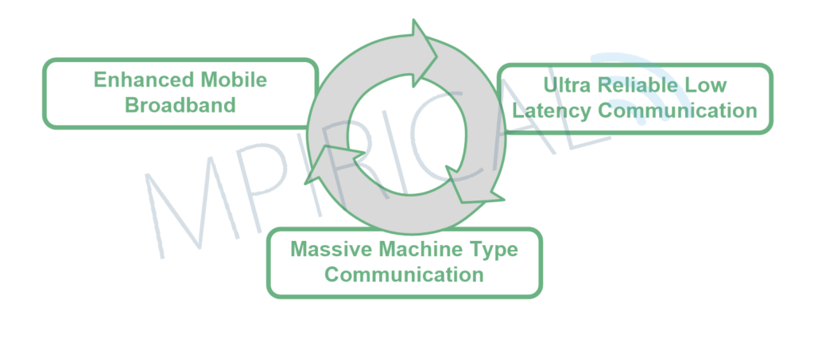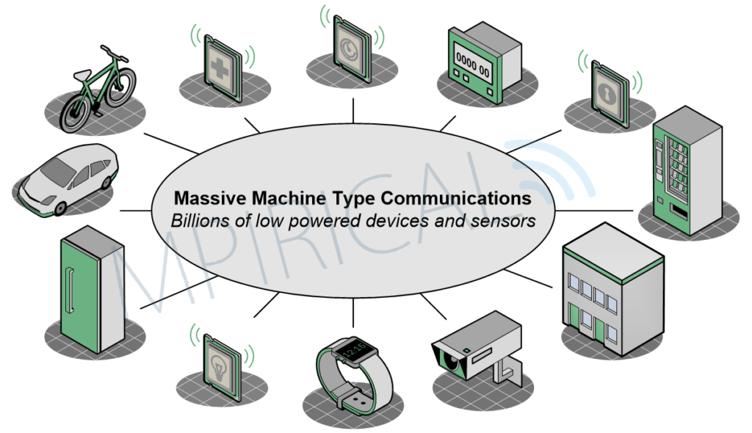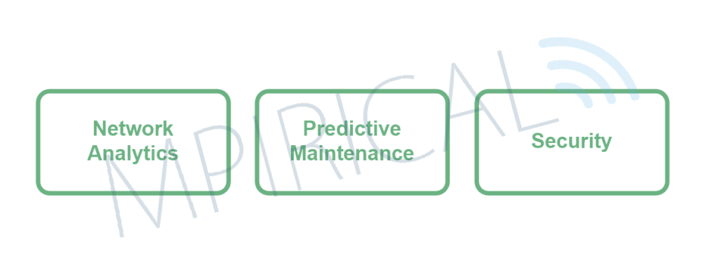
AI and 5G Use Cases – How AI Uplifts 5G Technology
AI and 5G use cases
AI (Artificial Intelligence) and 5G are two of the most transformative technologies of our time. In combination, they have the potential to revolutionize the way we live and work. In this blog post, we will explore the link between AI and 5G, focusing on both consumer use cases as well as how AI and ML (Machine Learning) can be used within the 5G network in terms of automation, analytics, and network optimization.
Consumer use cases

The combination of AI and 5G is expected to bring many benefits to consumers. Here are a few examples:
Smart city: Includes things like intelligent transportation systems that reduce traffic congestion, smart buildings that use energy more efficiently, and public safety systems that use data to predict and prevent crime. Smart cities aim to create a more sustainable and efficient urban environment, while also improving the safety and well-being of their citizens. The goal is to use technologies such as 5G and AI to make cities more liveable, sustainable, and responsive to the needs of their residents.
Smart homes: With the help of 5G and AI, smart homes can become even smarter. AI-powered virtual assistants can help homeowners manage their homes more efficiently, by controlling the temperature, turning off lights when not in use, and even making recommendations for energy savings. With 5G’s high bandwidth and low latency, smart homes can respond quickly to user requests, making them more intuitive and convenient.
Autonomous vehicles: Autonomous vehicles require high-speed connectivity and low latency to function safely and efficiently. 5G networks can provide the necessary connectivity, while AI and ML can be used to make vehicles smarter and more responsive to their surroundings. For example, AI-powered cameras and sensors can detect obstacles and adjust the vehicle’s speed and direction accordingly.
Augmented Reality (AR) and Virtual Reality (VR): AR and VR applications require high-speed connectivity and low latency, which 5G can provide. With AI and ML, AR and VR experiences can be enhanced by providing personalized content and recommendations based on user behaviour and preferences. This can create immersive experiences that are tailored to each individual user, making them more engaging and enjoyable.
AI and ML within the 5G network
In addition to the consumer-oriented use-cases, AI and ML can also be used within the 5G network itself, to improve performance and efficiency. Here are a few examples:

Network optimization: AI and ML algorithms can be used to optimize the 5G network, by predicting traffic patterns and adjusting the network accordingly. This can help to reduce network congestion and improve the overall user experience.
Network analytics: AI and ML can be used to analyze large amounts of data in real time generating insights that can be used in network optimisation, security analysis and personalisation of services for end users.
Network security: AI and ML can be used to detect and prevent cyberattacks on the 5G network. By analyzing network traffic and identifying anomalies, AI-powered security systems can prevent attacks before they occur.
Edge computing: 5G networks are expected to enable edge computing, which brings computing power closer to the end-user. AI and ML algorithms can be used to process data at the edge, which can improve response times and reduce latency.
The revolution of 5G
5G technology is already beginning to revolutionize the way we communicate and interact with the world. The three foundational use cases of 5G technology are Ultra-Reliable Low-Latency Communication (URLLC), Enhanced Mobile Broadband (eMBB), and Massive Machine-Type Communication (MMTC). Each of these use cases addresses a specific need for the communication industry. URLLC provides low latency and high-reliability communication for critical applications, such as autonomous vehicles and remote surgery. eMBB offers faster download and upload speeds, enabling high-quality video streaming and improved gaming experiences. MMTC allows for the connection of a vast number of devices in the Internet of Things (IoT) ecosystem, providing efficient and cost-effective communication for various industries. With 5G technology targeting new market verticals, such as healthcare, manufacturing, and smart cities, it is clear that 5G technology has the potential to transform not only the communication industry but also many other industries, creating a more connected and efficient world.

5G, IoT and Artificial Intelligence
The combination of 5G, The Internet of Things (IoT), and Artificial Intelligence (AI) is set to bring about a significant transformation in various industries, including healthcare, manufacturing, and transportation. 5G technology provides the high-speed connectivity required for the deployment of IoT devices, while AI allows for the processing and analysis of the massive amounts of data generated by these devices.

The integration of AI and IoT is revolutionizing healthcare. Wearable devices equipped with sensors and connected to 5G networks can monitor patient vitals and provide real-time data to healthcare professionals. AI algorithms can then analyze this data to detect potential health issues and provide personalized treatment plans. Similarly, in the manufacturing industry, IoT devices can collect real-time data on production lines, which can be analyzed by AI algorithms to optimize production efficiency.
Furthermore, the combination of 5G, IoT, and AI has the potential to revolutionize transportation. Connected vehicles can communicate with each other and with traffic management systems, reducing congestion and improving safety. AI algorithms can analyze the data generated by these systems to predict traffic patterns, optimizing routes for individual vehicles.
As these technologies continue to advance, we can expect to see even more innovative use cases emerge, transforming the way we live and work.
5G for AI – The implications
The integration of 5G and AI brings about numerous implications, including costs, complexity, ethical issues, privacy, and security concerns.
Firstly, the deployment of 5G networks requires significant infrastructure investment, which can be costly. The integration of AI also requires specialized hardware and software, which can add to the overall cost. Additionally, the complexity of these technologies and their integration can pose significant challenges for businesses and organizations.
Secondly, ethical issues can arise when AI and 5G technologies are integrated. For instance, the use of AI algorithms to make decisions that affect people’s lives or to replace job roles poses particular moral dilemmas and we are already starting to see countries pass legislation to limit the use of AI. In Italy for example the AI chatbot ChatGPT has been banned over data breach concerns.
Thirdly, privacy and security concerns arise from the integration of 5G and AI technologies. As 5G networks connect more devices and generate more data, the risk of cyber-attacks increases. AI algorithms also rely on data, and any breach in the security of data can result in significant harm to individuals and businesses.
Clearly, there is a balance to be struck and Mobile Service Providers will need to consider these potential implications when deploying AI in their 5G networks.
How will AI improve 5G wireless capabilities?
AI has the potential to improve 5G wireless capabilities in several ways. One way AI can enhance 5G is by optimizing network performance. AI algorithms can analyze vast amounts of data generated by the network and provide insights into network usage patterns, traffic congestion, and performance issues. This data analysis can help network operators optimize network traffic, allocate resources more efficiently, and reduce latency, resulting in faster speeds and a better user experience.

Another way AI can improve 5G is through predictive maintenance. 5G networks are complex, and equipment failures can result in significant downtime and service disruptions. By using AI algorithms, network operators can analyze data from network equipment to detect potential issues before they occur, enabling proactive maintenance and reducing downtime.
AI can also improve the security of 5G networks. AI algorithms can analyze network traffic in real-time and detect potential security threats, such as malware or cyberattacks. This data analysis can help network operators detect and respond to security threats quickly, reducing the risk of network breaches and protecting users’ data.
Leveraging machine learning for 5G
Machine Learning is a subset of AI and involves the analysis of large amounts of data to allow a system to make decisions without being explicitly programmed. We have already outlined several key uses of AI within the 5G Network that are reliant on ML including network optimization, security, and predictive maintenance.
In addition, ML can improve the overall user experience by enabling intelligent automation of various tasks, such as network configuration and troubleshooting. For instance, ML algorithms can automatically optimize network settings based on user behaviour and device type, resulting in faster speeds and a more seamless user experience.
The future of AI and 5G
AI is a rapidly developing field and as we move forward into an increasingly connected big data-oriented world it is likely to take on more significance in people’s lives. As a result of this, there are likely to be significant challenges in terms of privacy, security, and ethical concerns that will need to be addressed.
The combination of AI and 5G has the potential to transform many aspects of our lives, from smart homes to autonomous vehicles. AI and ML can be used to enhance the consumer experience, while also improving the performance and efficiency of the 5G network itself. As these technologies continue to evolve, we can expect to see even more innovative use cases emerge, creating a more connected and intelligent world.
If you would like to learn more about 5G, our expert instructors provide live classroom and on-demand 5G Network Data Analysis.
